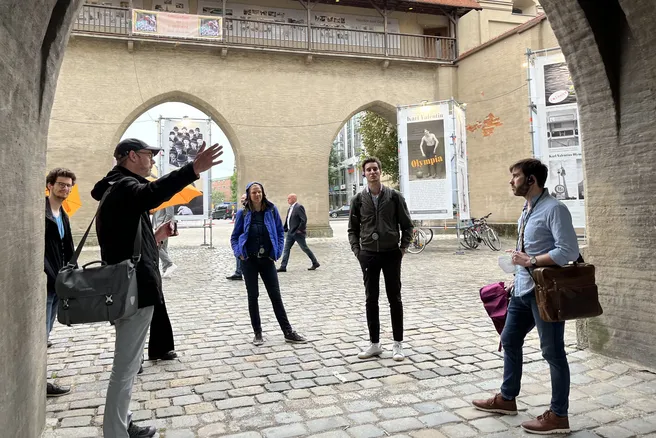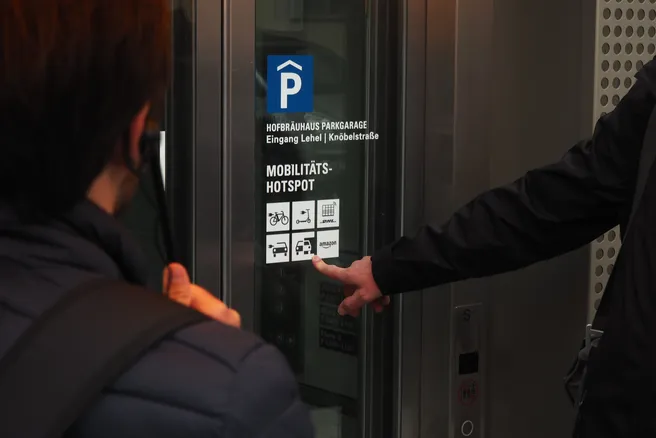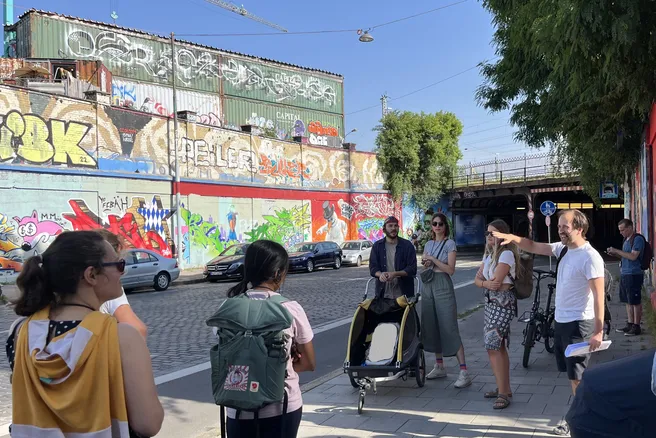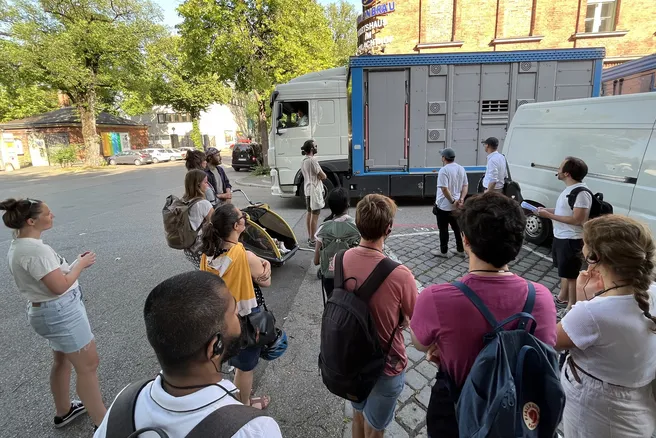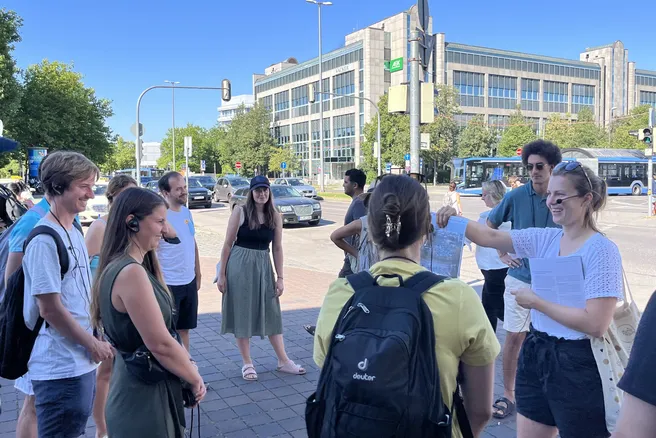On the route of the first walk, Prof. Dr.-Ing. Gebhard Wulfhorst provided information about the "colourful infinity" that a city like Munich entails. Starting at the Ludwigsbrücke, built in the 11th century, hidden places, mobility hotspots and planned projects of the city of Munich were explored. In addition to construction sites, we also talked about cycle lanes, citizens' petitions and #parkdeinpark. The walk ended at Hackenplatz, where a representative of the initiative "Bewegte Quartiere" (Green City e.V.) presented their plans for #streetexperiments for the summer of 2022.
On the second walk, Sebastian Seisenberger, a Münchner Kindl, presented the Schlachthofviertel. From Lindwurmstraße in the west of the Ludwigsvorstadt-Isarvorstadt district. The route included discussions about the disused Munich South station, the mobility station at Piazza Zenetti, the new Volkstheater, the dikussions about the Schlachthofviertel and of course the "boat on the bridge". In addition to historical facts and figures, the topics of gentrification, blue infrastructure and culture were also discussed.
The third walk took place away from the centre: In Neuperlach, Dr.-Ing. Julia Kinigadner led the walkers to various places that showed the differences between planning and reality. From pep (the (shopping) centre in Neuperlach) the walk continued, explaining the planning approaches of the "Athens Charter" along the way. After crossing Ständlerstraße, the separation of living, working and shopping became clear. The tour ended at the Marxs Centre, one of eight original sub-centres. Within an integrated urban development concept, however, these and other places in Neuperlach are now to be upgraded.
All in all, the openWALKS were a complete success for us. We would like to thank all speakers and all openWALKers for taking part.
We want to continue to go on a journey of discovery with you, enter into dialogue with each other and develop ideas for the future of urban mobility from this, which is why we will continue to offer the openWALKS. When and where the next walks will take place will of course be published soon.
